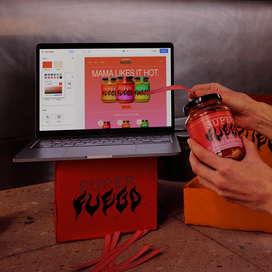Table of contents
Returns are expensive. Ask any omnichannel retailer or eCommerce business, and they’ll tell you the same. Total retail returns added up to $743 billion in merchandise in 2023; returns fraud contributed $101 billion in overall losses for retailers; and the costs of the shipping and labor required to process returns eat even further into retailers’ profit margins.
But returns are necessary. Offering convenient customer returns for both online and in-store purchases is part of the seamless omnichannel experience required to compete in today’s competitive landscape. There’s no doubt that making customer returns easy while still protecting your margins can be a difficult balancing act for retailers. But if you get them right, return strategies can help satisfy both customer expectations and retailers’ bottom lines.
Broadly, retailers’ return strategies should give customers at least one of three options for returning items: by mail, accepting them in-store, or allowing customers to keep items.
Offering more than one option can improve customer satisfaction by giving shoppers a choice in their preferred way to return. The different types of return options outlined below come with unique considerations that retailers should keep in mind as they develop or revisit their return policies.
Mail-in returns
Retailers and eCommerce businesses that accept mail-in returns usually have customers ship their items directly to the businesses’ warehouses or fulfillment centers (where the items are inspected for refund eligibility and potentially put back in stock).
The cost of shipping the to-be-returned items is either covered by the retailer or not, depending on how they decide to craft their unique return policy. Charging customers for return shipping fees or restocking fees is one way many retailers counter the costs of processing returns, which eats into their margins, but customers prefer free returns. Seventy-six percent of respondents to an Industry Dive and Radial survey said free returns with the brand covering their shipping costs are their top choice for returns.
Retailers on the receiving end of mail-in returns often field poorly packaged items, leading to delays in processing returns or issuing refunds. Worse, retailers may receive different items in the mail than the customer even purchased, which is a common form of fraud that’s difficult for retailers to fight. (At large, 10% of returns are fraudulent, according to data from the National Retail Federation.)
Though accepting returns by mail comes with inherent fraud risk, online shoppers largely expect to have the option to send back items purchased online to receive full refunds or store credit. Both eCommerce businesses without physical stores and retailers with vast physical store networks typically accept mail-in returns for online orders.
Charging customers for return shipping fees or restocking fees can help retailers counter the costs of processing returns, but customers prefer free returns.
In-person returns
For customers, the process of mailing in returns can be a headache. It often requires them to track down shipping materials, assemble to-be-returned items in appropriate packaging, fill out online return forms, and print out shipping labels. Then, customers can either lug the package to their nearest shipping carrier location (such as a FedEx, UPS, or a United States Postal Service office) or schedule an at-home pickup.
More often than not, the process of bringing items to a physical location for a no-box return can be much more convenient for consumers (who may not have or want to use a printer to create a shipping label) and cost-effective for the retailer (who can process a return faster and cheaper if it arrives in-store).
For example, a McKinsey survey of apparel companies found that in-store returns that are restocked in the store take 12 to 16 days fewer to process, on average, than those on slower paths, like returning by mail and restocking in the store. Retailers who utilize flexible POS systems, like Square for Retail, can easily sync inventory and returns across all in-store and online locations while accepting returns at mobile return stations or at the checkout counter in-store.
Accepting returns in-store is a must for retailers with stores. Not only does it help them get eligible items back into stock quickly, but getting customers back into the store — even if they intend to return — also makes exchanges more feasible (since alternate products, sizes, and colors are instantly available in-store). This helps retailers keep more revenue.
Driving more in-store shopping can also help retailers with stores reduce overall returns since in-store purchases are returned at a lower rate than online orders (10.02% compared to 17.6%, according to National Retail Federation data). ECommerce retailers without stores may also be able to speed up returns and save on shipping costs by opting to accept returns at third-party locations, such as partner retailers’ stores.
Bringing an item to a physical location for a no-box return can be much more convenient for customers than packaging the item up for a mail-in return.
‘Returnless’ or ‘keep it’ returns
Given the expense and fraud associated with mail-in returns, some retailers are opting to allow customers to keep “returned” items and still receive full or partial refunds for lower-priced products.
Returnless approaches to retail returns can be a fit for small, low-cost, or hard-to-package items for which shipping may cost as much or more than the products (or getting the products to a store or third-party location isn’t feasible). Retailers with returnless approaches to online retail returns should establish certain rules or criteria, such as a price limit, for which products are eligible and which are not.
Processing fewer returns
Processing fewer returns overall is a goal for most businesses, and a few efforts can help. Providing clear product imagery and detailed, accurate product descriptions, for example, can help online shoppers get their orders right the first time.
Modifying their return policies can also help retailers reduce return rates. It’s advantageous for retailers to be upfront about their return policies and consider return parameters like return window, offering store credit or a cash refund, and if they’re willing to allow returns on discounted items at all. Before shortening return windows or limiting returns only to certain items, however, retailers should consider the potential impact that such policy changes can have on customer satisfaction.
And while online shopping is here to stay, retailers ultimately benefit from increasing in-store shopping. A full 63% of consumers surveyed in the Square 2024 Future of Retail report say they typically shop in-store, versus 37% who shop online. Consumers reported their number one reason for wanting to shop in-store rather than online is to see, touch, or try before buying (66%), which can reduce return rates.
Customers want return options, and the right mix differs for every business.
Especially for retailers with stores, offering in-person returns is important to satisfying customers while protecting margins and capitalizing on consumers’ continued affinity for in-person shopping. According to the Square 2024 Future of Retail report, more than half (51%) of retailers are planning to focus on enhancing the in-store experience in the next 12 months. Making in-store returns easier should be part of that focus.
To learn about the strategies retail businesses plan to use to stay competitive in 2024 and more, download the Square 2024 Future of Retail report.
![]()









